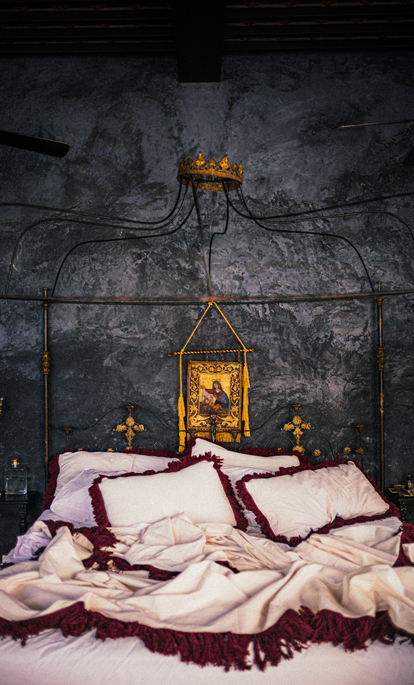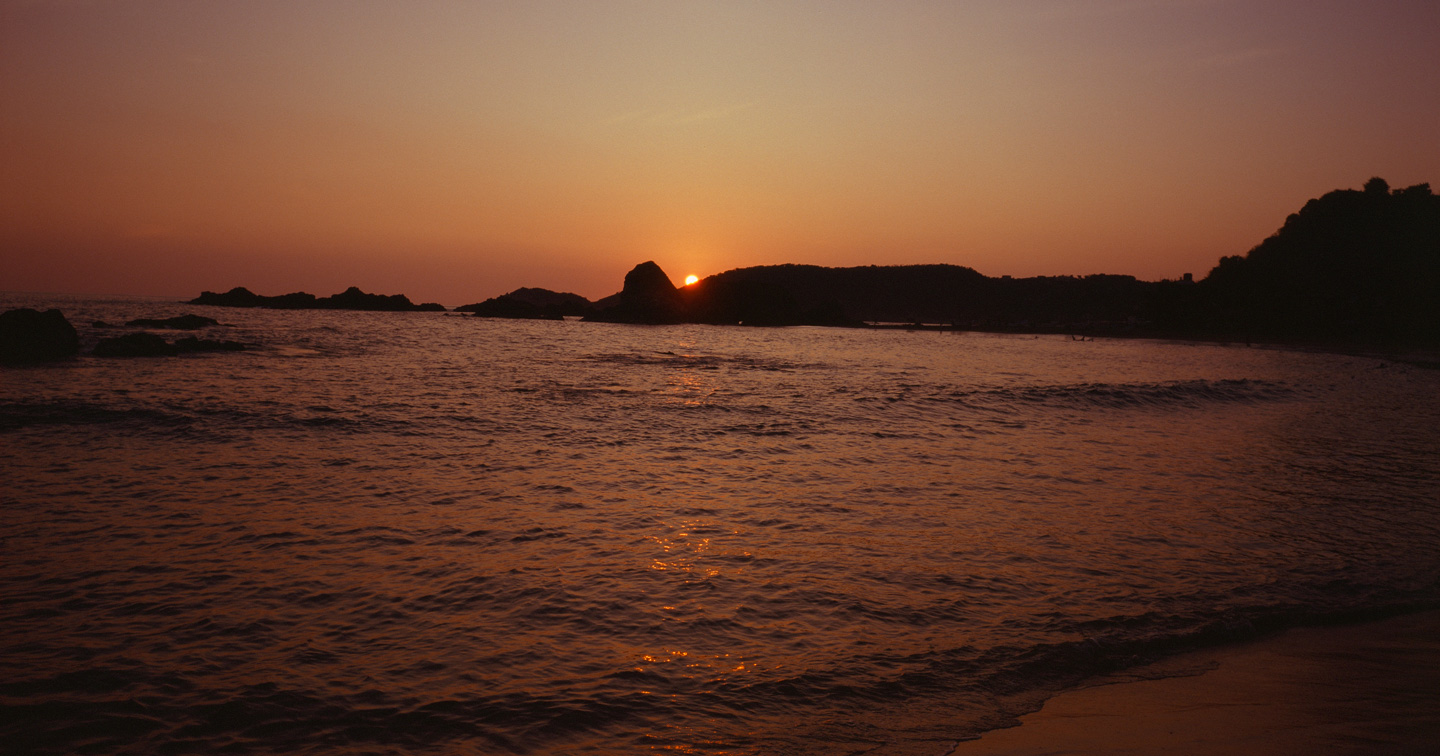
A few suggestions to get the holiday planning process started

Designing authentic trips with a focus on local people, experiences and communities, our consultants have scoured the length of this colourful country to uncover its secret spots. Among these are hotel hideaways offering a real Mexican welcome, from private haciendas to local homestays. Whether you’re most interested in architecture, culture, wildlife, food or lucha libre (Mexican wrestling), our clued-up regional guides have you covered. And during your trip, our talented in-country Concierges are on hand to impart even more insider tips.
ENQUIRE NOWDiscover different ways to explore Mexico
Practical advice and inspiration to help you prepare for your holiday
Our consultants’ love for Mexico runs deep (and so does their expertise). One even fell for more than just the country and married a Mexican. We've spent time there as both tourists and locals, staying in everything from local houses to five-star hotels, so can recommend the very best properties for you. Our partners on the ground are committed to responsible, ethical and authentic tourism, meaning the focus is on local people, experiences and communities. So, you know you’re getting the absolute best out of the area you’re visiting.

Mexico is a Central American luxury holiday hotspot with a little something for everyone; it is cloaked in jungle, ancient Mayan ruins, temples, tropical beaches, bustling cities, volcanic mountains, deserts and crystal clear waters. Mexico City, the country’s vibrant capital, is a good place to begin Mexico holidays. The bustling metropolis sits at an altitude of 6,600ft above sea level and is a designated UNESCO World Heritage site, in recognition of its rich history and mish-mash of cultures. The Yucatan Peninsula is perfect for those looking to combine hedonism and history, with swathes of white sand, turquoise Caribbean waters and ancient Mayan ruins peppered along the Riviera Maya coastline. The diving is also fantastic in this part of Mexico, either alongside the Lighthouse Reef (the world's second longest) or in collapsed limestone caves known as cenotes. As well as picturesque colonial towns and the vast and vibrant metropolis of Mexico City, the states of Oaxaca and Chiapas offer one of the most culturally diverse experiences a luxury holiday in Mexico can produce. Located between the Caribbean and Pacific coasts and to the south of Mexico City, Oaxaca is undoubtedly Mexico's creative hub and Chiapas is brimming with archaeological and natural wonders.
The inner cowboy/girl in you may enjoy venturing to the plunging canyons of Northern Mexico to explore Copper Canyon, which is four times the size of the Grand Canyon and no less stunning. This is a real adventure playground for hiking, zip lining and biking. A Copper Canyon tour would also combine perfectly with a jaunt to the beaches of the Baja Peninsula. Cenotes (natural sinkholes created from the collapse of soluble limestone rock) are another natural wonder of Mexico, with more than 6,000 found throughout the country (mostly along The Yucatan Peninsula). Once regarded as sacred water sources by the ancient Mayans and used as sites of sacrificial offerings, the tranquil waters are now excellent spots for snorkelling and swimming. Go diving in Cenote Dos Ojos, near Playa del Carmen, swimming in Cenote Dzitnup, near Valladolid, or snorkelling in Cenote Manatí, on the Riviera Maya.
Home to baroque gems, a strong cultural heritage and no fewer than forty UNESCO-listed landmarks, Mexico offers a plethora of experiences. Dig deep and you can discover lost cities built by pre-Columbian civilisations, and meet their descendants who frequent the highland markets. Mexico holidays allow you to explore myriad landscapes (and their flora and fauna), from Baja California’s cactus-studded deserts to the smoking Popocatepetl volcano. These and other landscapes create a platform for exploration; witness the great butterfly migration – a true wildlife phenomenon – and encounter exotic creatures such as the quetzal – a strikingly-coloured bird treasured by the Aztecs. Meanwhile, wherever you go, fiesta is never far away, with sultry salsa, roaming mariachi bands and delicious tequila on hand.
Nine days in the Yucatan Peninsula is a good length of time to explore both Mexico’s ancient Mayan culture and its picturesque beaches. Those feeling a little more adventurous should consider hiring a car for a 12 to 15-day road trip combining Mexico and neighbouring Guatemala (although in Guatemala we recommend a driver and a guide). Or why not make the most of your trip by stopping in the United States from where you can detour to Belize, Costa Rica, Panama and Nicaragua, all exceptional destinations in their own right.
Mexico’s vast variety of landscapes and rich cultural treasures lend themselves to both romantic escapes and family holidays. Fans of archaeology can soak up the legacy of the ancient civilisations that dot Mexico’s landscapes, with private tours of the Mayan ruins at Chichen Itza and Uxmal, so you can experience their full glory without any tourist crowds. There’s much more to the Yucatan Peninsula than the city of Cancun, and the region is perfect for nature lovers who can enjoy 4x4 rides, rafting and boating in this tropical idyll. Tulum and Playa del Carmen, located on Yucatan’s Riviera Maya, are both renowned for their idyllic white-sand beaches and bohemian atmosphere, while further inland, the city of Valladolid is filled with culture in the form of Mexican folk art and colonial buildings.
Travel to the north of Mexico to discover contrasting landscapes, including vast deserts and deep canyons, which are perfect for adventure activities as part of a family holiday. Charming haciendas and postcard-worthy beaches make for a romantic retreat while children will no doubt enjoy climbing pyramids, meeting wildlife and playing pirate in the Caribbean Sea. With so much to explore, Mexico also makes a great place for solo travel, and can be combined with other Central American countries for the trip of a lifetime. Our travel experts will help design the perfect itinerary to suit your individual desires.
- Relaxing in a private villa or on a beach at the edge of the Tulum ruins
- Stay in a historic hacienda
- Go whale watching and swim with sea lions in Baja California
- Get close to whale sharks in Isla Holbox
Divided by the Tropic of Cancer, Mexico has two distinct climatic zones, which can make deciding when to visit difficult and dependent on the region where you’ll be spending the most time. The climate in the north is mild, with colder winters than in the south. The south generally sees stable temperatures year-round, yet the altitude also has an influence on the climate, with cooler temperatures at higher altitudes. Mexico also has a wet season, which takes place from June to October throughout most of the country (dry season runs from February to July). December to February are generally the coolest months, however temperatures can still reach as high as 28°C during the dry season. Overall, the best time to visit Mexico is between October and April.

Our team of destination experts will get to know you and your unique requirements for your holiday

We work with you to build an ultra-personalised holiday itinerary with your choice of accommodation, experiences and activities

All of our holidays include little extras designed to make a big difference to your trip, from fast-tracking you through airport check-in and security to our network of local Concierges